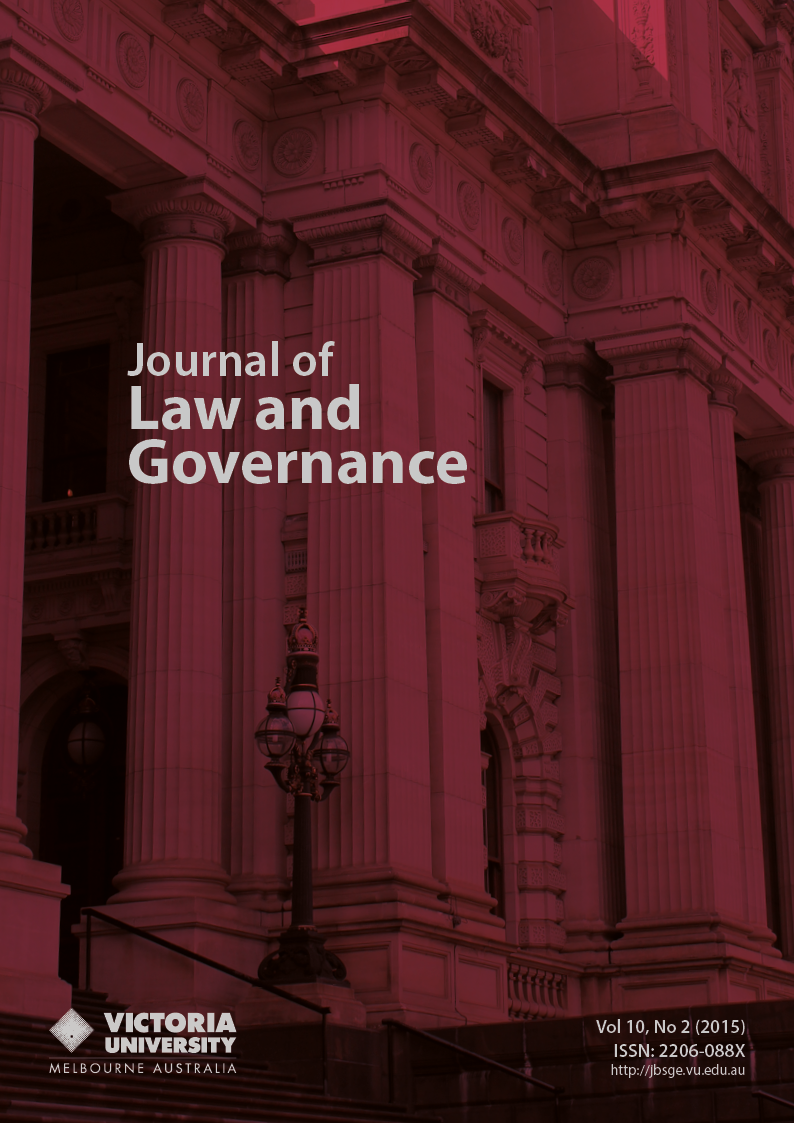The Company in the 21st Century
Piercing the Veil: Reconceptualising the Company under Law
DOI:
https://doi.org/10.15209/jbsge.v10i2.851Abstract
The corporations law describes the legal identity of a company as being a ”separate” entity, or having a separate personality from its owners or managers. Piercing the veil of a corporation occurs when a court disregards this distinction to hold people to account. The paper reviews the historical development of the legal form of companies, three theories which assist in understanding the role of companies in society, and how and why piercing of the veil has developed. The author argues that contemporary law lacks an adequate definition of a company and the doctrine of piercing is becoming increasingly irrelevant. In this context he proposes a new definition of a company appropriate for today’s society.
Published
2015-12-22
How to Cite
Parker , D. (2015). The Company in the 21st Century: Piercing the Veil: Reconceptualising the Company under Law. Journal of Law and Governance, 10(2), 1–12. https://doi.org/10.15209/jbsge.v10i2.851
Issue
Section
Articles
License
Authors who publish with this journal agree to the following terms:- Authors retain copyright and grant the journal right of first publication with the work simultaneously licensed under a Creative Commons Attribution License that allows others to share the work with an acknowledgement of the work's authorship and initial publication in this journal.
- Authors are able to enter into separate, additional contractual arrangements for the non-exclusive distribution of the journal's published version of the work (e.g., post it to an institutional repository or publish it in a book), with an acknowledgement of its initial publication in this journal.
- Authors are permitted and encouraged to post their work online (e.g., in institutional repositories or on their website) prior to and during the submission process, as it can lead to productive exchanges, as well as earlier and greater citation of published work (See The Effect of Open Access).


